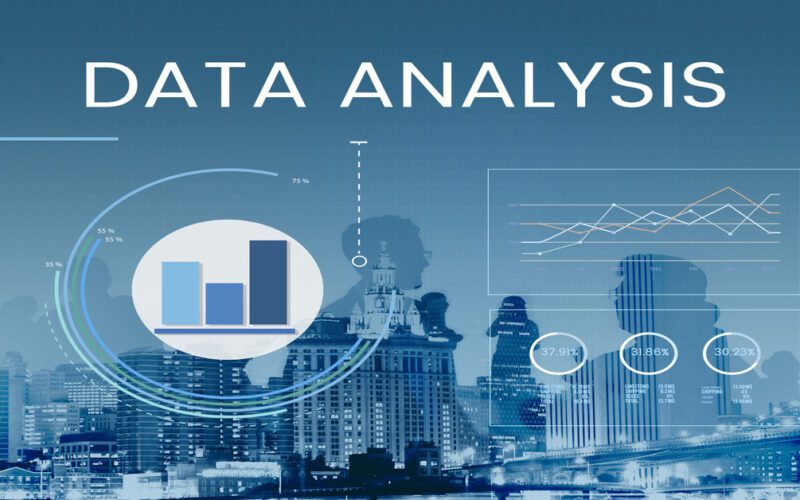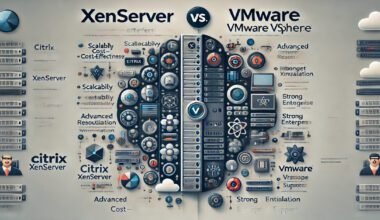Summary: Python simplicity, extensive libraries like Pandas and Scikit-learn, and strong community support make it a powerhouse in Data Analysis. It excels in data cleaning, visualisation, statistical analysis, and Machine Learning, making it a must-know tool for Data Analysts and scientists.
Introduction
In the rapidly evolving field of Data Analysis, the choice of programming language can significantly impact the efficiency, accuracy, and scalability of data-driven projects. Among various programming languages, Python has emerged as a powerhouse in Data Analysis due to its versatility, ease of use, and extensive library support.
This blog will delve into the reasons why Python is essential for Data Analysis, highlighting its key features, libraries, and applications.
Why Python?
Discover the reasons behind Python’s dominance in data analysis, from its user-friendly syntax and extensive libraries to its scalability and community support, making it the go-to language for data scientists and analysts worldwide.
Flexibility and Ease of Use
One of the primary reasons Python is a favourite among Data Analysts is its flexibility and ease of use. Python’s syntax is designed to be simple and readable, making it an ideal tool for both beginners and experienced programmers.
The language’s focus on simplicity and readability means that it boasts a gradual and relatively low learning curve, allowing new users to quickly grasp the basics and start working on complex projects.
Python’s flexibility extends to its ability to handle a wide range of tasks, from quick scripting to complex data modelling. This versatility makes Python perfect for developers who want to script applications, websites, or perform data-intensive tasks.
The ease of use also means that Data Analysts can spend more time analysing data and less time dealing with the intricacies of the programming language itself.
Community Support and Resources
Python’s popularity is not just due to its technical capabilities but also its strong community support. The language is open-source, which means it is free and uses a community-based model for development.
This community-driven approach ensures that there are plenty of useful analytics libraries available, along with extensive documentation and support materials.
For Data Analysts needing help, there are numerous resources available, including Stack Overflow, mailing lists, and user-contributed code. The more popular Python becomes, the more users contribute information on their user experience, creating a self-perpetuating spiral of acceptance and support.
Data Manipulation
Data manipulation is a critical step in any Data Analysis workflow. Python offers several libraries that make this process efficient:
NumPy
This library provides support for large, multi-dimensional arrays and matrices, along with a collection of mathematical functions to operate on these arrays. NumPy arrays allow for efficient application of operations, making the code both shorter and more efficient.
Pandas
Built on top of NumPy, Pandas provides high-level data structures and methods designed to make Data Analysis fast and easy. It allows for storing data in tabular format using DataFrames, which are particularly useful for cleaning and manipulating data.
Polars
A fast DataFrame library implemented in Rust, designed to provide efficient data manipulation. It is particularly useful for handling large datasets.
Data Visualisation
Visualising data is crucial for understanding trends and patterns. Python offers several libraries to create a wide range of visualisations:
Matplotlib
The go-to library for creating static, animated, and interactive visualisations in Python. It provides a comprehensive set of tools for creating high-quality 2D and 3D plots.
Seaborn
Built on top of Matplotlib, Seaborn provides a high-level interface for drawing attractive statistical graphics. It is particularly useful for creating informative and aesthetically pleasing visualisations.
Plotly
An interactive graphing library that supports a variety of charts and maps. It is ideal for creating interactive dashboards and web-based visualisations.
Read More on Differences Between Seaborn and Matplotlib.
Statistical Analysis
Statistical analysis is the backbone of Data Analytics, helping to interpret data and draw meaningful conclusions. Python offers several libraries for this purpose:
SciPy
A fundamental library for scientific computing, offering modules for optimization, integration, interpolation, eigenvalue problems, and more. It is essential for performing advanced statistical computations.
Statsmodels
Allows users to explore data, estimate statistical models, and perform statistical tests. It is particularly useful for regression analysis and hypothesis testing.
Pingouin
A library designed for statistical analysis, providing a comprehensive collection of statistical tests. It is user-friendly and integrates well with other Python libraries.
Machine Learning
Machine Learning is a critical component of modern Data Analysis, and Python has a robust set of libraries to support this:
Scikit-learn
This library helps execute Machine Learning models, automating the process of generating insights from large volumes of data. It provides tools for classification, regression, clustering, and more.
PyMC3
A probabilistic programming framework that uses Markov Chain Monte Carlo (MCMC) methods for Bayesian statistical modelling. It is particularly useful for complex Machine Learning tasks.
Practical Applications
Python’s versatility and extensive library ecosystem make it a powerful tool for various practical applications in Data Analysis. Here are some key areas where Python is particularly useful:
Data Mining and Cleaning
Data mining and cleaning are critical steps in any Data Analysis workflow. Python’s libraries such as Pandas and NumPy make these tasks efficient. For example, handling missing values, formatting data, and normalising data are all simplified through these libraries.
Exploratory Data Analysis
Exploratory Data Analysis involves performing computations on data to understand its distribution and identify patterns. Python’s libraries such as Pandas and Matplotlib make this process straightforward. Users can calculate basic descriptive statistical information, group data, and visualise it to better understand the data distribution.
Machine Learning and Prediction
Machine Learning models are increasingly used in Data Analysis for prediction and decision-making. Python’s Scikit-learn library provides tools for building and evaluating regression models, classification models, and clustering algorithms. These models can be used to predict outcomes and make informed decisions.
Data Visualisation and Reporting
Data visualisation is crucial for communicating insights to stakeholders. Python’s visualisation libraries such as Matplotlib, Seaborn, and Plotly allow Data Analysts to create high-quality visualisations that help in understanding trends and patterns. These visualisations can be integrated into reports and dashboards to provide actionable insights.
Career Opportunities
The demand for Data Analysts and Data Scientists who are proficient in Python is high and continues to grow. Knowing Python opens up career opportunities in various fields, including:
Data Science
Python is a cornerstone in the field of data science, used for tasks ranging from data cleaning to Machine Learning.
Marketing Analytics
Data Analysts in marketing use Python to analyse customer data, identify trends, and optimise marketing strategies.
Software Engineering
Python’s versatility makes it a popular choice for software development, including data-intensive applications.
Conclusion
Python’s essential role in Data Analysis is undeniable. Its flexibility, ease of use, and extensive library support make it the go-to language for Data Analysts. Whether you are performing data manipulation, visualisation, statistical analysis, or Machine Learning, Python has the tools and resources to support you.
For anyone looking to start or advance their career in Data Analysis, learning Python is a wise choice. The language’s simplicity and the wealth of resources available ensure that you can quickly get started and make significant contributions in the field.
As the world continues to generate more data, the importance of Python in Data Analysis will only continue to grow.
In summary, Python is not just a tool for Data Analysis; it is a comprehensive ecosystem that supports the entire Data Analytics pipeline. Its flexibility, community support, and extensive library ecosystem make it an indispensable asset for any Data Analyst or Data Scientist.
Frequently Asked Questions
Why Is Python Preferred for Data Analysis?
Python is preferred for data analysis due to its simplicity, extensive libraries like Pandas, NumPy, and Scikit-learn, and strong community support. These features make it efficient for tasks ranging from data cleaning to Machine Learning and visualisation.
What Are the Key Libraries Used in Python for Data Analysis?
Key libraries include Pandas for data manipulation, NumPy for numerical operations, Matplotlib and Seaborn for visualisation, and Scikit-learn for Machine Learning. These libraries simplify complex tasks and provide robust tools for various aspects of data analysis.
How Does Python Support Machine Learning in Data Analysis?
Python supports Machine Learning through libraries like Scikit-learn, TensorFlow, and PyTorch. These libraries offer implementations of various algorithms, including classification, regression, clustering, and neural networks. They automate model selection, training, and evaluation, making predictive analytics and pattern recognition tasks more accessible.




